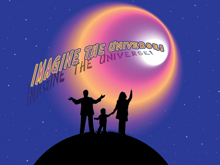Science Goals
Two of the key scientific questions that astronomers hope XMM-Newton will help answer are:
- When and where are the chemical elements created? All the hydrogen and helium in the Universe were created by the Big Bang, but virtually all the other elements were created by nuclear processes inside stars. XMM-Newton can reveal the details of this creation by probing the amount of oxygen, silicon, iron, and other elements in nearby stars, supernova remnants in our Galaxy and its neighbors, and in distant clusters of galaxies.
- How does nature heat gas to X-ray emitting temperatures? X-rays are only created at extreme temperatures, or through very high-energy processes. XMM-Newton's sensitive measurements will help scientists explain how gases are heated to these extraodinary energies in the corona of a star, and how cosmic ray particles are accelerated in young supernova remnants.

These false-colour images show the spiral galaxy M100, also known as NGC 4321, and within the galaxy the supernova SN 1979C. On the left is the image of M100 in the UV/optical, taken with XMM-Newton's Optical Monitor (OM) camera, and on the right the galaxy is shown on the same scale but imaged in the X-ray with XMM-Newton's MOS cameras. (Image courtesy of Stefan Immler (NASA GSFC) and ESA.)
During its first 18 months, the observing program included hundreds of X-ray sources of various types. The first months were spent calibrating the instruments, and verifying that all of them were performing without major problems. This has been checked for all the X-ray instruments.
For more information:
- Check out XMM-Newton's image gallery to see some of the cool science the team has done
- Learn more about X-ray astronomy at NASA's Imagine the Universe
- Learn more about spectroscopy at NASA's Imagine the Universe


